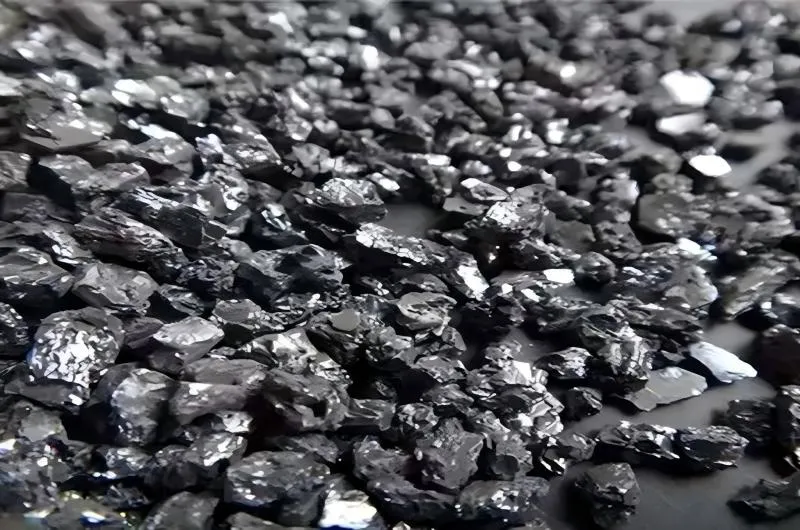BY  GENN
GENN
2024/10
Blog
Is Silicon Carbide Food Safe?
Covalent connections between silicon and carbon atoms create silicon carbide, a non-metallic compound having the chemical formula SiC. Depending on the purity, it might seem yellow, green, or blue-black. Silicon carbide is widely employed in various fields and has numerous good features.
Introduction to Silicon Carbide
Covalent connections between silicon and carbon atoms create silicon carbide, a non-metallic compound having the chemical formula SiC. Depending on the purity, it might seem yellow, green, or blue-black. Silicon carbide is widely employed in various fields and has numerous good features.
Strong wear resistance is one of silicon carbide’s qualities. The only material harder than it is is diamond. Its hardness ranges widely. varying crystal plane directions have quite varying densities, and as the temperature rises, densities progressively diminish. Simultaneously, silicon carbide resists corrosion and has a high elastic elasticity. When processing materials with low tensile strength, such as glass, ceramics, stone, refractory materials, cast iron, and non-ferrous metals, it works effectively as an abrasive.
Because of its many benefits, including its tiny thermal expansion coefficient, strong thermal conductivity, stable chemical characteristics, and good wear resistance, silicon carbide is used to create innovative refractory materials. It has excellent energy-saving properties and is tiny, light, strong, and resistant to heat shock.
Nearly all goods in the industry that employ silicon carbide are artificially produced. In 1824, Berzelius produced silicon carbide for the first time by reducing potassium silicofluoride. American chemist Acheson created this artificial mineral on a large scale in 1891. This material was initially found by the Frenchman Moissan in a meteorite in Alexandria, USA, in 1904, but it contained very little and had little mining use. Another name for natural silicon carbide is Moissanite.
There are two types of silicon carbide crystal structures: cubic β-SiC and hexagonal or rhombohedral α-SiC. Above 2100„�, β-SiC changes into α-SiC complex. Silicon carbide has a density of 3.21g/cm³. It dissolves readily in molten iron, potassium hydroxide, and sodium hydroxide but is insoluble in water. It doesn’t have a universal melting or boiling point. At 2700°C, it sublimates and breaks down. It has a low coefficient of thermal expansion. Roughly 4.4×10⁻⁵/°C can be the average thermal expansion coefficient when the temperature is between 25 and 1400°C. Thermal conductivity is high; in engineering, it is often measured as 0.015–0.023 cal/cm⁃℃sec.
Characteristics Of Silicon Carbide
(I) Physical characteristics
Silicon carbide has a density of 3.21g/cm³. While silicon carbide is readily soluble in molten potassium and sodium hydroxide as well as molten iron, it is insoluble in water. Silicon carbide has a low thermal expansion coefficient; in the temperature range of 25 to 1400℃, the average thermal expansion coefficient might be approximately 4.4×10⁻⁵/℃. Engineering often calculates the high thermal conductivity as 0.015–0.023 cal/cm⁃℃sec.
Silicon carbide is a semiconductor with a resistance of between 10⁻² and 10³²Ω・cm. Its conductivity varies depending on the kind and quantity of impurities added to the crystal. High-purity silicon carbide exhibits a decreasing resistance as temperature rises. Silicon carbide with aluminum impurities has a nonlinear volt-ampere characteristic curve, and as the electric field strength increases, so does the conductivity.
(II) Chemical characteristics
Thermodynamic calculations show that silicon carbide oxidizes relatively easily, yet that its time oxidation graph is parabolic. The silicon dioxide produced by its oxidation produces a thin film at a specific temperature, which progressively impedes the oxidation process. At 800°C, silicon carbide starts to oxidize in the air, but the process happens slowly. The rate of oxidation increases quickly with temperature. The oxidation nearly stops when the temperature reaches 1600°C. This is so that silicon carbide is shielded by the silicon dioxide layer that forms when it reaches a specific thickness. In oxygen, silicon carbide oxidizes 1.6 times more quickly than in air.
Safety of Silicon Carbide in Food
Because silicon carbide is soluble in aqueous solutions, it will not dissolve in water under normal conditions or release potentially dangerous compounds into food. The ease with which silicon carbide reacts with molten alkali, however, has prompted concerns over its safety in food.
Although molten alkali conditions are generally unlikely to occur in food, the potential dangers of silicon carbide need to be carefully considered when accounting for various environmental circumstances and potential accidents during food processing.
Because of the chemical makeup of silicon carbide, when it oxidizes in air, a silicon dioxide coating is created that, to a certain extent, prevents additional oxidation. More research is still needed to determine whether this oxidation process in the food chain may result in chemicals that are hazardous to human health.
According to the safety data sheet for silicon carbide, food, drinks, and animal feed should be kept away from silicon carbide. This further illustrates the fact that using silicon carbide in the food industry carries some hazards and uncertainties.
In conclusion, despite the fact that silicon carbide has many industrial uses, its safety in food has not been completely established. As such, silicon carbide should be utilized cautiously in goods that come into contact with food.










